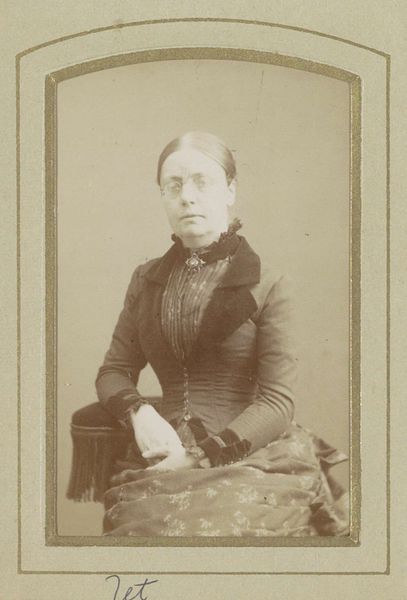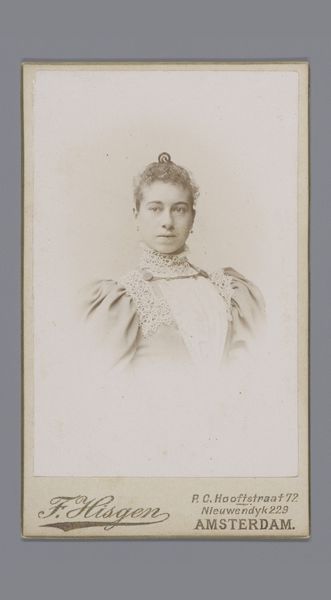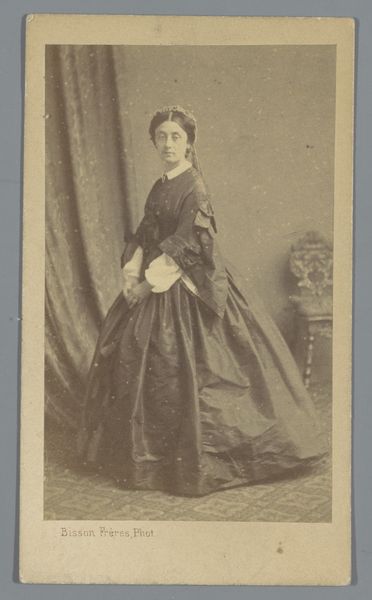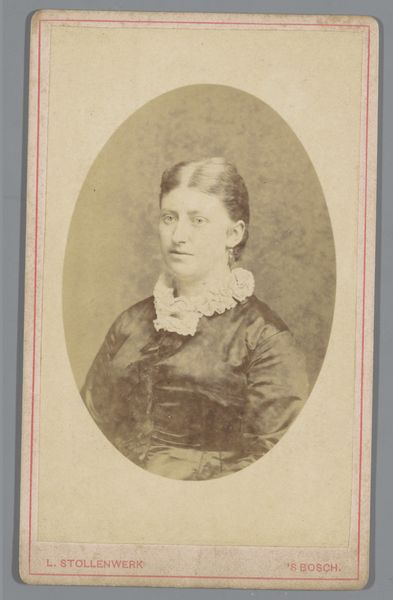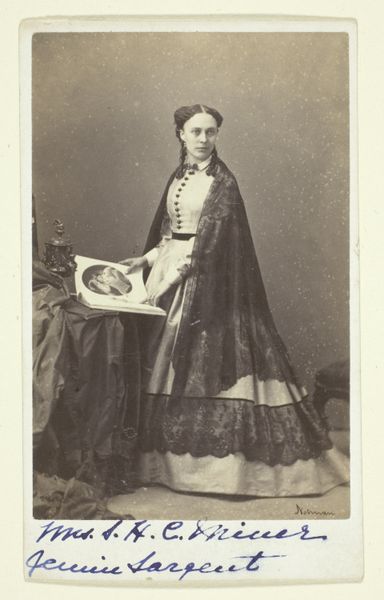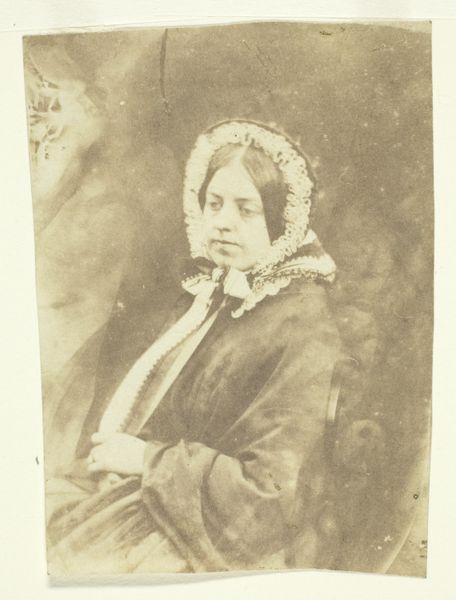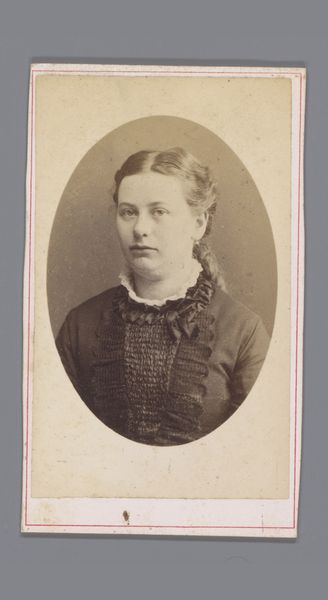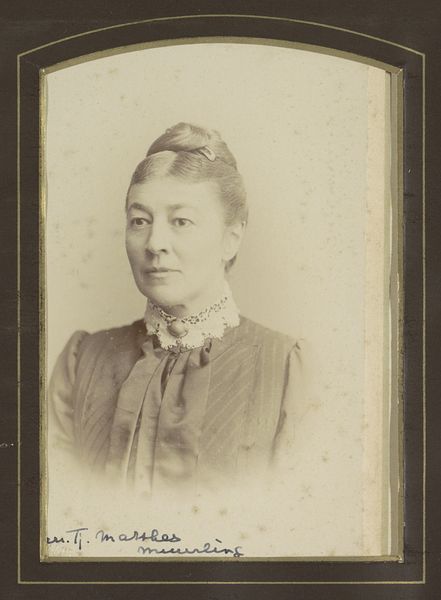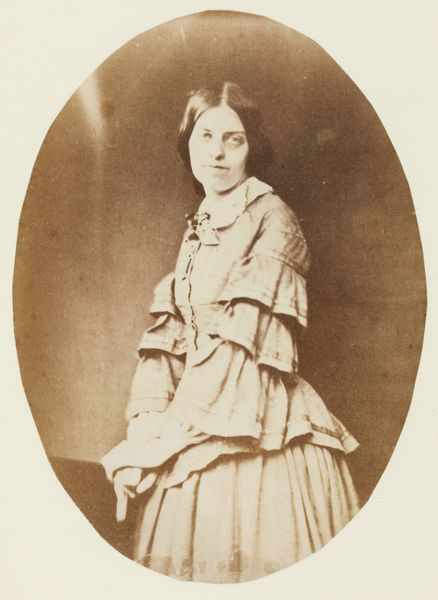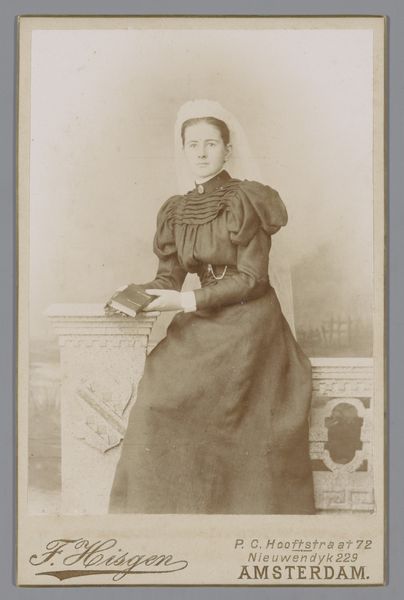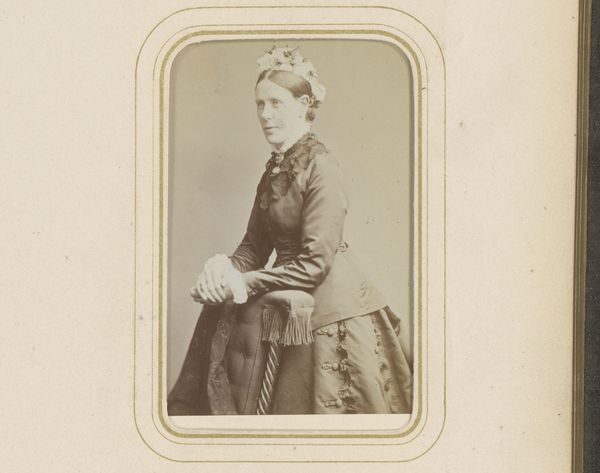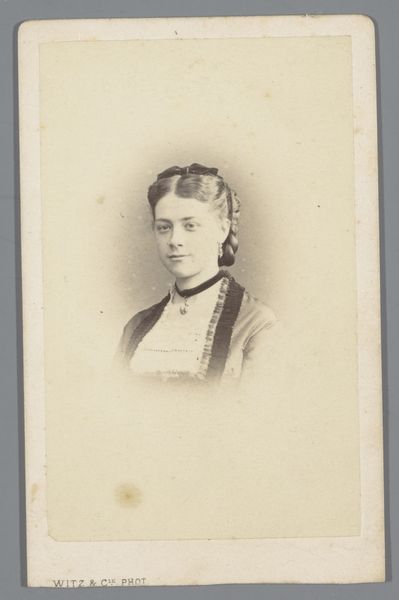
photography
#
portrait
#
aged paper
#
toned paper
#
16_19th-century
#
yellowing background
#
photo restoration
#
pictorialism
#
photography
#
historical photography
#
portrait reference
#
yellow element
#
19th century
Dimensions: height 137 mm, width 98 mm
Copyright: Rijks Museum: Open Domain
Curator: Looking at this photograph, titled "Portret van een vrouw met sluier in haar haren," created by Louis Désiré Dupont sometime between 1891 and 1900, the first thing I notice is its sepia tone—it gives it such a classic, almost haunting feel. Editor: The aged paper really adds to that effect. It almost feels like we’re looking at a ghost from the late 19th century. The veil, draped so dramatically, contributes to the mystery. Is it a symbol of mourning, perhaps? Curator: That’s a keen observation. During this period, the rise of photography allowed for greater democratization of portraiture, making it accessible to the middle class. Veils were common in mourning practices, but also could be markers of social status or even theatrical elements in portraits designed to convey particular moods or messages to family or prospective suitors. The context and motivation behind this piece becomes even more rich when we understand the expansion of photography as a popular means to connect with one's society. Editor: Indeed. And look at her gaze—so direct, almost challenging. The veil, while partially obscuring, also frames her face, emphasizing her eyes and conveying a quiet strength. It feels very deliberate, almost staged, suggesting a desire to control the narrative of how she's perceived. Curator: It aligns with pictorialism, a movement that sought to elevate photography to fine art by using soft focus and painterly effects. It certainly encourages deeper interpretation. Editor: Considering that, I’d argue that the veil is not just a functional item, but a symbolic device enhancing her allure and perhaps concealing parts of her identity in a performance of feminine mystique. Curator: Absolutely. Dupont would be building on layers of artistic representation to be decoded by those in the social spheres circulating this and other photographic portraits. Editor: Examining art from the past provides insights into social norms. I'm thankful to encounter this thought-provoking, century-old exchange about the veiled presentation of women in art and society. Curator: Me too. It reminds us that what we choose to show, and what we conceal, are both powerful statements.
Comments
No comments
Be the first to comment and join the conversation on the ultimate creative platform.
